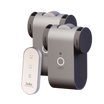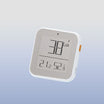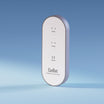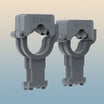Introduction
Smart home systems are no longer a futuristic concept, but a reality that has revolutionized the way we live. With the advent of IoT (Internet of Things) and the advancements in artificial intelligence and machine learning, smart home systems have become more accessible and affordable for the general public. In this article, we will explore the composition and working principles of smart home systems and understand how they work together to provide a seamless and convenient living experience.
Composition of Smart Home Systems
Smart home systems are composed of several devices and components that work together to automate various functions in your home. Here are some of the essential components of a smart home system:
1. Smart Hubs
A smart hub is the central command center of a smart home system. It is a hardware device that connects to the internet and communicates with other smart devices in your home. A smart hub is responsible for managing and controlling all the devices in your smart home system.
2. Smart Devices
Smart devices are the individual components that make up a smart home system. They are designed to be connected to a smart hub and communicate with each other through a wireless network. Smart devices can range from smart bulbs, smart thermostats, smart locks, to smart cameras and sensors.
3. Voice Assistants
Voice assistants are intelligent software programs that allow you to control your smart home system through voice commands. Some popular voice assistants include Amazon Alexa, Google Assistant, and Apple Siri. Voice assistants can be integrated with smart hubs to enable voice-controlled automation.
4. Mobile Apps
Mobile apps are an essential part of a smart home system. They allow you to control and monitor your smart home system from anywhere, using your smartphone or tablet. Mobile apps enable you to manage your smart devices, set schedules, and receive alerts and notifications.
Working Principles of Smart Home Systems
Smart home systems work based on the principles of automation, interconnectivity, and data exchange. Here is how a smart home system works:
1. Automation
Smart home systems automate various functions in your home, such as lighting, heating, and security. Automation enables your smart devices to work together, providing a seamless and convenient living experience. For instance, you can set your smart lights to turn on automatically when you enter a room or set your smart thermostat to adjust the temperature based on your preferences.
2. Interconnectivity
Smart home devices are designed to be interconnected and communicate with each other through a wireless network. This interconnectivity enables your smart devices to work together and share data, providing a more personalized and efficient living experience. For instance, your smart thermostat can communicate with your smart lights and adjust the lighting based on the temperature in the room.
3. Data Exchange
Smart home systems collect and exchange data to provide personalized automation and improve your living experience. For instance, your smart thermostat can learn your temperature preferences over time and adjust the temperature accordingly. Similarly, your smart lights can learn your lighting preferences and adjust the lighting accordingly.
Conclusion
Smart home systems are a game-changer in the way we live, offering a convenient and personalized living experience. By understanding the composition and working principles of smart home systems, you can make informed decisions while selecting and managing your smart devices. With the continued advancements in technology, smart home systems are poised to become an integral part of our daily lives, making our homes more comfortable, secure, and efficient.





















Leave a comment
All comments are moderated before being published.
This site is protected by hCaptcha and the hCaptcha Privacy Policy and Terms of Service apply.